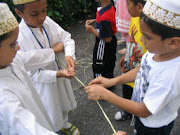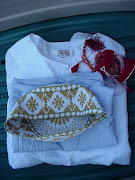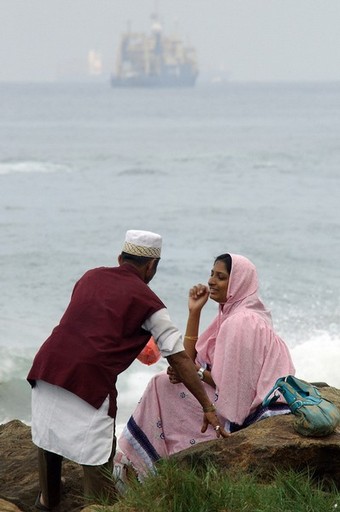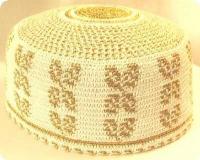 are the main branch of the Bohras, a Musta‘lī subsect of Ismā‘īlī Shī‘a Islām. The subsect is based in India although the Bohra school of thought originates from Yemen.
are the main branch of the Bohras, a Musta‘lī subsect of Ismā‘īlī Shī‘a Islām. The subsect is based in India although the Bohra school of thought originates from Yemen.The word Bohra itself is derived from the Gujarati word Vehwahar, which is interpreted as "trading".
The spiritual leader is Dr Syedna Mohammed Burhanuddin. He is known as the Dā‘ī l-Mutlaq and is the 52nd Dā‘ī in an unbroken chain.Bohras believe that the 21st Imām, Taiyab abi al-Qasim, believed to be a direct descendant of Muħammad through his daughter Fātimatu z-Zahra ("Fatema"), went into seclusion and established the offices of the Dā‘ī l-Mutlaq (داعي المطلفق), Ma'ðūn (مأذون) and Mukasir (مكاسر).
The Dā‘ī l-Mutlaq is the Imām's vicegerent, with full authority to govern the Dawoodi Bohra community in all matters both spiritual and temporal.During the Imām's seclusion, the Dā‘ī l-Mutlaq is appointed by his predecessor in office. The ma'ðūn and mukasir are in turn appointed by the Dā‘ī l-Mutlaq. A fundamental belief of the Dawoodi Bohras is that the presence of the secluded Imām is guaranteed by the presence of the Dā‘ī l-Mutlaq.Mohammed Burhanuddin has appointed Syedi Khuzaima Qutbuddin as his ma'ðūn and Syedi Husain Husamuddin as his mukasir.
Fatimid originsAl-Hurra Al-Malika of Yemen appointed the first Dāˤī in Yemen in the mid-twelfth century. The Fatimid dā‘wah was to remain headquartered in Yemen, India and Pakistan (Sindh) under the leadership of the Dā‘ī l-Mutlaq.
After acute persecution from the Sunnī majority in Yemen, the Dā‘wah shifted to India and some followers also relocated. However, a large population of Dawoodi Bohras remained in Yemen and do so today.
Some Bohras' ancestors were converts from Hinduism to Islam in Gujarat, India. Their conversion was the result of the work of some Fatimid missionaries from Egypt and Yemen, which took place before the seclusion of the 21st Fatimid Imām, some time during the caliphate of Imām al-Mustansir. The converted were largely from the Hindu higher castes, many of whom were engaged in trade and commerce. Later, indigenous converts undertook the missionary activities in other regions such as the areas that today constitute Rajasthan, Madhya Pradesh and Maharashtra.
Contemporary Dawoodi Bohras

The Dawoodi Bohras are a very closely-knit community who seek advice from the Dā‘ī on spiritual and temporal matters.
While the majority of Dawoodi Bohras have traditionally been traders, it is becoming increasingly common for them to become professionals. Within South Asia many choose to become doctors, and in the Far East and the West, a large number now work as consultants or analysts as well as a large contingent of medical professionals. Dawoodi Bohras are encouraged to educate themselves in both religious and secular knowledge, and as a result, the number of professionals in the community is rapidly increasing.
Dawoodi Bohras believe that the education of women is equally important to that of men, and many Dawoodi Bohra women choose to enter the workforce. Al Jamea tus Saifiyah (The Arabic Academy) in Surat and Karachi is a sign to the educational importance in the Bohra community.
The Academy has an advanced curriculum which encompasses religious and secular education for both men and women.
Today there are approximately one million Dawoodi Bohras. The majority of these reside in India and Pakistan, but there is also a significant diaspora resident in the Middle East, East Africa, Europe, North America and the Far East.
The ordinary Bohra is highly conscious of his identity and this is especially demonstrated at religious and traditional occasions by the appearance and attire of the participants. Dawoodi Bohra men wear a traditional white three piece outfit, plus a white and gold cap (called a topi), and women wear the rida, a distinctive form of the commonly known burqa which is distinguished from other forms of the veil due to it often being in colour and decorated with patterns and lace. Young girls wear a simple two-piece suit with a collar and shalwaar called a Jabloo Izaar. They wear this with a girl's topi, decorated with sequins and sometimes lace.
Besides speaking the local languages, the Bohras have their own language called Lisānu l-Dā‘wat "The language of the Dā‘wat". This is written in Arabic script but is derived from Urdu, Gujarati and Arabic.
Remembrance of the martyrdom of Imām Husayn, grandson of Muħammed, is an essential part of every Bohra community activity. Every year, the head of the community, Mohammed Burhanuddin delivers religious discourses for ten days during the days of Āshūrā and these are attended by a large number of community members.
Fundamentals of the faith
The Isma'ili faith, unlike mainstream Islam, is based on the concept of hierarchy and each authority at the lower rank has to submit to the one at the higher rank. There cannot be any compromise on that. These religious authorities are known as Hudūd in the Isma'ili terminology. The hadd (pl. hudūd) at the upper rank demands total obedience from the hadd at lower rank. Thus the Isma'ili faith is religion of obedience and submission to the authorities. No dissent is permitted. There is no permission given to an unauthoritative person of an open and democratic discussion on religious affairs without the consultation of the religious authority, due to the esoteric nature of the Isma'ili faith which stresses on the hidden meaning of Qur'an and the allegorical interpretation of the pillars of Islam, a peculiar Isma'ili philosophy on unity, creation, cosmology, eschatology, institution of prophethood and Imāma. Therefore an Isma'ili believer should submit to the authority of the Dāˤī al-Mutlaq and Imām unquestionably on the discretionary powers and orders on the religious, social and observance of customary obedience to the higher rank of the religious hierarchy. Only those at the advance stage of learning could aspire to know the hidden meaning and the tawīl and due to this reason the Dāˤī al-Mutlaq take strict oath of allegiance (mithaq) from his followers so as to pledge their absolute loyalty to the Imām or the Dāˤī al-Mutlaq.
Thus, at the age of puberty every Bohra, or mu'min "believer", pronounces the traditional oath of allegiance which requires the initiate to adhere to the Shari'a and accept the religious leadership of the Imāms and Dāˤī al-Mutlaq. This oath is renewed each year on the 18th of Dhu 'l-Hājj (Eid-e Ghadeer-e Khumm).
The Bohras follow Fatimid school of jurisprudence, which recognizes seven pillars of Islam. Walāyat (love and devotion) for God, the prophets, the Imāms and the Dāˤī al-Mutlaq is the first and most important of the seven pillars. The others are tahārat (purity & cleanliness), salāt (prayers), zakat (purifying religious dues), sawm (fasting), hajj (pilgrimage to Mecca) and jihad (Struggle).
Pilgrimages to the shrines of the Mawāli-e Taherīn (saints) is an important role in the devotional life of Bohras, for the facilitation of which musafir-khaanas and assisting charitable organizations and awqāf have been set up in several cities. Every new year, the first ten days of Muharram is marked by the martyrdom of Imām Husayn and is commemorated by setting up sabeel and majālis-e 'azadari. Social gatherings are mainly on the occasions of aqīqa (naming of the new born child), milād (anniversary), mīthāq (religious oath), walīma (marriage), iftitāh (opening ceremony), urs (commemoration of the deceased Dāˤī al-Mutlaq), and majālis (in the month of Muharram and Ramadan).The traditional dress of Dawoodi Bohras is kurta, pyjama, topi and sayā for male and rida for female. On all religio-social occasions they are dressed in the above fashion. They eat in the form of traditional thal.







